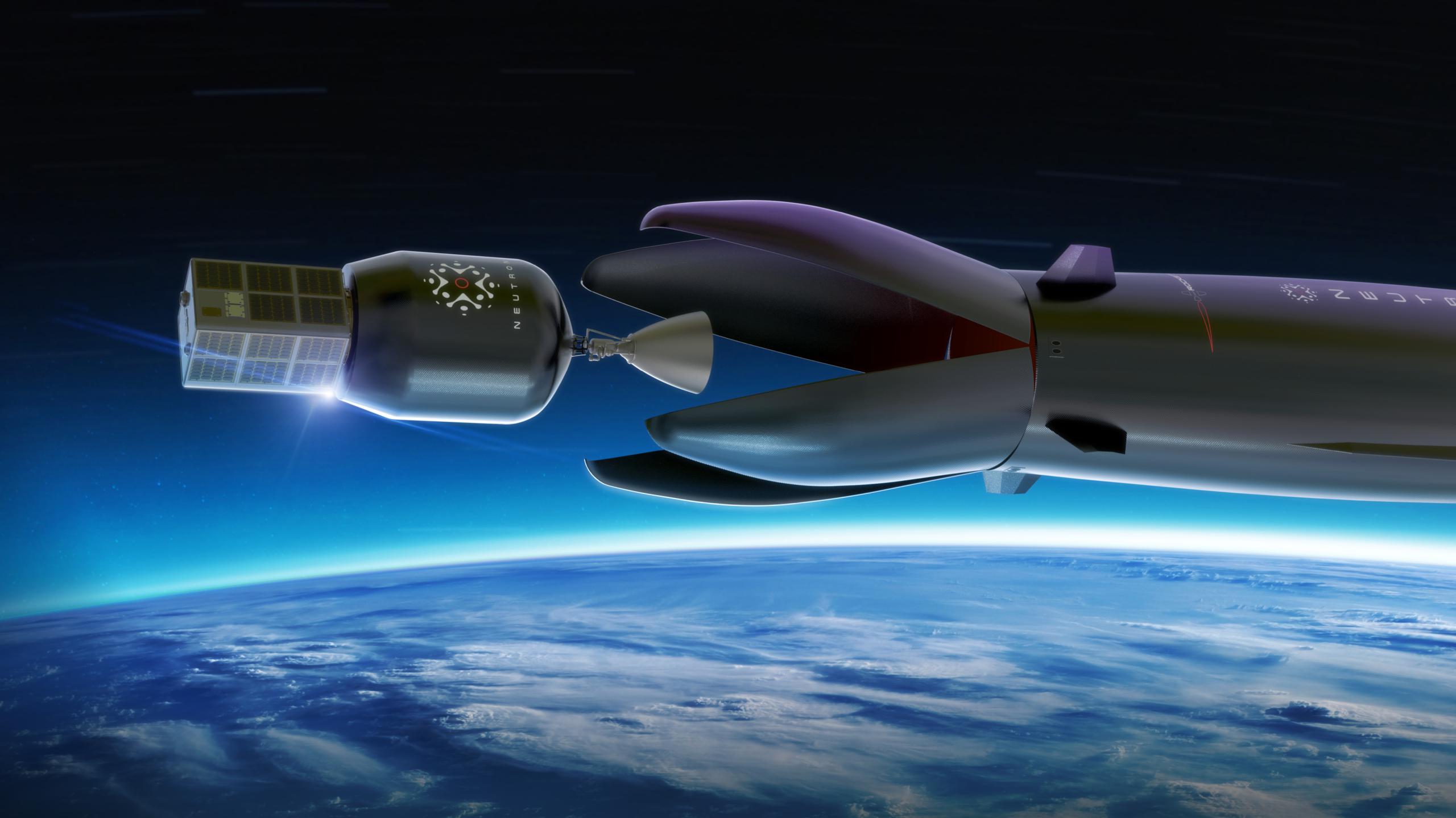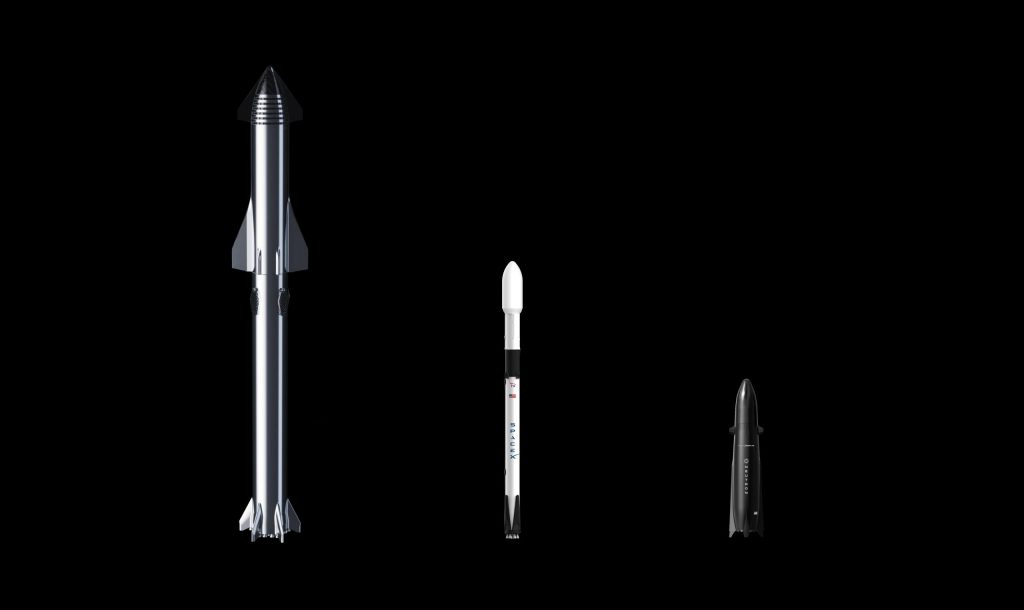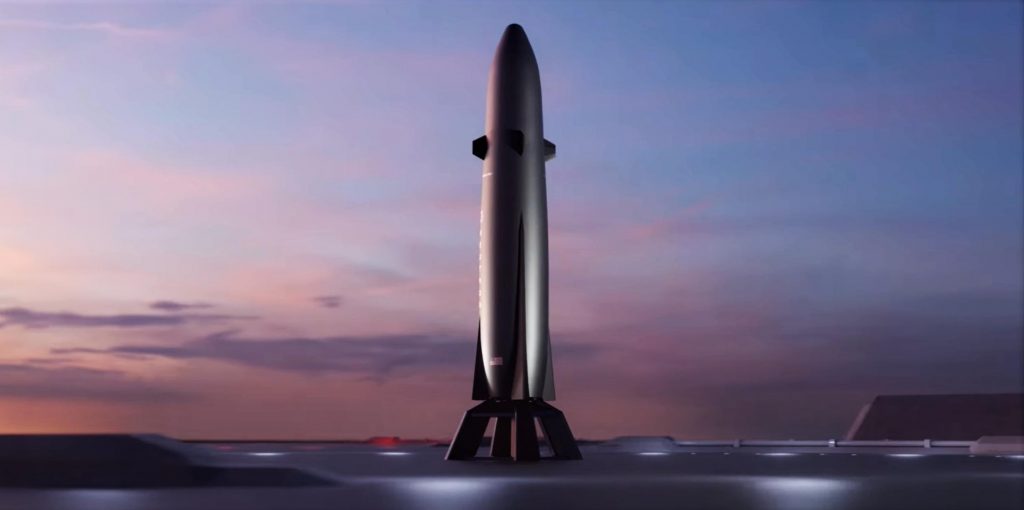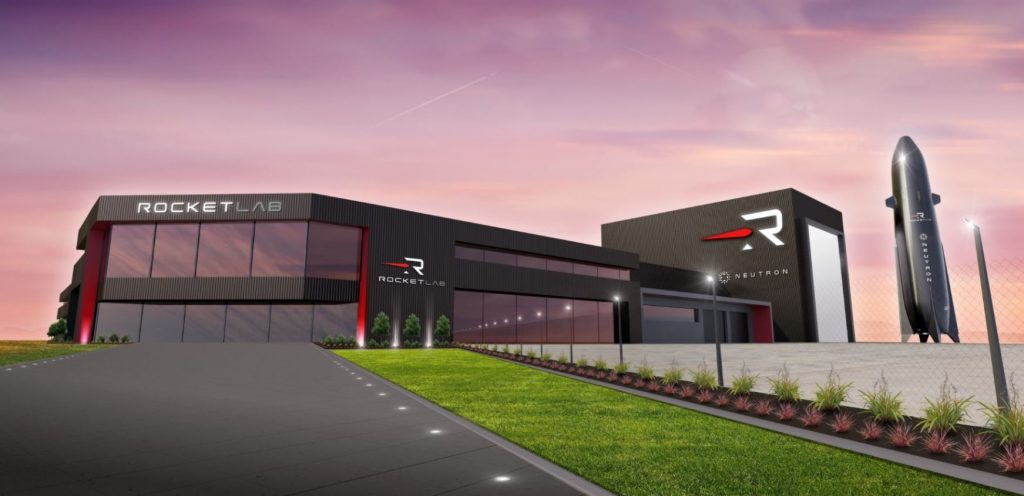

News
Rocket Lab to build reusable Neutron rocket factory and launch pad in Virginia
Rocket Lab has selected Virginian island to host the first launch site, factory, and landing pad for its next-generation Neutron rocket.
In a move reminiscent of SpaceX’s Starbase Starship factory and launch sites, Rocket Lab plans to build and launch its Neutron rocket in more or less adjacent facilities within NASA’s Wallops Flight Facility and Mid-Atlantic Regional Spaceport on Virginia’s Eastern Shore. Rocket Lab estimates that this new facility will bring over 250 jobs to the area, including engineers, technicians, and support staff that will be working at the complex.
The 250,000-square-foot facility will support Neutron production, assembly, and integration within spitting distance of its first orbital launch site. The site will be Rocket Lab’s third main rocket development and production facility, joining a small factory and headquarters in Huntington Beach, California, and a more substantial Auckland, New Zealand factory. Rocket Lab’s Auckland factory is dedicated to manufacturing the company’s smaller Electron rocket, which (for now) is exclusively launched out of pads located on the north island’s Māhia Peninsula. Neutron’s Virginia manufacturing complex will be in close proximity to Rocket Lab’s lone American Electron launch pad (LC-2), which is also located at Wallops.
However, Electron is merely Rocket Lab’s first step into orbital rocketry Neutron, Rocket Lab’s next rocket, will be capable of launching at least 8 tons (~17,600 lb) into low Earth orbit (LEO). Borrowing heavily from experience with Electron, Neutron will be the first medium-lift rocket made primarily of carbon fiber composites.

Unlike Electron, though, Neutron is being designed from the ground up for partial reusability. Powered by its reusable Archimedes engines, Rocket Lab believes the Neutron launch vehicle will be ideal for satellite constellation launches but also be sized right to support a range of other missions, including deep space exploration and, potentially, human spaceflight. In practice, even though Neutron’s design is substantially different, the rocket is effectively a half-scale Falcon 9 with some noteworthy modifications. Both are two-stage rockets with expendable upper stages and reusable boosters and fairings. With fairing and booster recovery, Falcon 9 is able to launch about 16 tons (~35,000 lb) to LEO – twice Neutron’s 8 tons.
Neutron stands at approximately 131 feet tall (39.9 meters) and between 5 and 7 meters (16-23 ft) wide – more than twice the height and 4-6 times the width of Electron. Because of its size and performance, Rocket Lab expects Neutron to be a strong competitor with other large launch providers, including SpaceX. As far as cost per launch, Beck has declined to provide an estimate beyond stating that “ it would be a pointless exercise [if Rocket Lab] didn’t think that it would be very cost-competitive with anything that’s currently in the market or being proposed.” Currently, the company’s Electron rocket is sold for about $7-8 million per launch. SpaceX, their largest prospective competitor, has sold Falcon 9s for as little as $50 million, while executives have indicated that the rocket costs the company just $28 million for a launch with a reused booster and fairing.
Rocket Lab has received strong support from the Commonwealth of Virginia and the Virginia Economic Development Partnership is working alongside Accomack County, the Virginia Commercial Space Flight Authority (Virginia Space), and the General Assembly’s Major Employment and Investment (MEI) Project Approval Commission to help expedite the process. That support is one of the primary reasons Rocket Lab selected Virginia of all places to build its first Neutron hub. According to Rocket Lab, as part of the Commonwealth’s proposal, “$30 million has been set aside for infrastructure and operational systems improvements to the Mid-Atlantic Regional Spaceport where the Neutron launch site will be located, along with $15 million from the MEI Project Approval Commission in site improvements and building construction in support of Neutron.”
Shaun D’Mello, the company’s Vice President stated, “We’ve enjoyed a solid partnership with Virginia for years that will no doubt be strengthened with Neutron. We have a shared mission to develop Rocket Lab’s presence at the Mid-Atlantic Regional Spaceport into a strategic national asset that provides responsive, reliable, reusable space launch through Neutron and Electron, and breaking ground on the site soon is a significant and impelling step toward that future.”



A public target has not been set for the completion of the factory and launch site but Rocket Lab states that they “expect to begin construction promptly.” Neutron, scheduled to launch as earlier as 2024, has already generated some degree of demand, and the United States Space Force recently decided to invest $24 million in its development.
Rocket Lab revealed the news of Neutron’s first factory and launch site comes on the same day as the first orbital launch from Launch Complex 1’s new Pad B. To learn more about Pad B and Rocket Lab’s existing Electron launch facilities, click here.
News
Tesla launches in India with Model Y, showing pricing will be biggest challenge
Tesla finally got its Model Y launched in India, but it will surely come at a price for consumers.

Tesla has officially launched in India following years of delays, as it brought its Model Y to the market for the first time on Tuesday.
However, the launch showed that pricing is going to be its biggest challenge. The all-electric Model Y is priced significantly higher than in other major markets in which Tesla operates.
On Tuesday, Tesla’s Model Y went up for sale for 59,89,000 rupees for the Rear-Wheel Drive configuration, while the Long Range Rear-Wheel Drive was priced at 67,89,000.
This equates to $69,686 for the RWD and $78,994 for the Long Range RWD, a substantial markup compared to what these cars sell for in the United States.
🚨 Here’s the difference in price for the Tesla Model Y in the U.S. compared to India.
🚨 59,89,000 is $69,686
🚨 67,89,000 is $78,994 pic.twitter.com/7EUzyWLcED— TESLARATI (@Teslarati) July 15, 2025
Deliveries are currently scheduled for the third quarter, and it will be interesting to see how many units they can sell in the market at this price point.
The price includes tariffs and additional fees that are applied by the Indian government, which has aimed to work with foreign automakers to come to terms on lower duties that increase vehicle cost.
Tesla Model Y seen testing under wraps in India ahead of launch
There is a chance that these duties will be removed, which would create a more stable and affordable pricing model for Tesla in the future. President Trump and Indian Prime Minister Narendra Modi continue to iron out those details.
Maharashtra Chief Minister Devendra Fadnavis said to reporters outside the company’s new outlet in the region (via Reuters):
“In the future, we wish to see R&D and manufacturing done in India, and I am sure at an appropriate stage, Tesla will think about it.”
It appears to be eerily similar to the same “game of chicken” Tesla played with Indian government officials for the past few years. Tesla has always wanted to enter India, but was unable to do so due to these import duties.
India wanted Tesla to commit to building a Gigafactory in the country, but Tesla wanted to test demand first.
It seems this could be that demand test, and the duties are going to have a significant impact on what demand will actually be.
Elon Musk
Tesla ups Robotaxi fare price to another comical figure with service area expansion
Tesla upped its fare price for a Robotaxi ride from $4.20 to, you guessed it, $6.90.

Tesla has upped its fare price for the Robotaxi platform in Austin for the first time since its launch on June 22. The increase came on the same day that Tesla expanded its Service Area for the Robotaxi ride-hailing service, offering rides to a broader portion of the city.
The price is up from $4.20, a figure that many Tesla fans will find amusing, considering CEO Elon Musk has used that number, as well as ’69,’ as a light-hearted attempt at comedy over the past several years.
Musk confirmed yesterday that Tesla would up the price per ride from that $4.20 point to $6.90. Are we really surprised that is what the company decided on, as the expansion of the Service Area also took effect on Monday?
But the price is now a princely $6.90, as foretold in the prophecy 😂
— Elon Musk (@elonmusk) July 14, 2025
The Service Area expansion was also somewhat of a joke too, especially considering the shape of the new region where the driverless service can travel.
I wrote yesterday about how it might be funny, but in reality, it is more of a message to competitors that Tesla can expand in Austin wherever it wants at any time.
Tesla’s Robotaxi expansion wasn’t a joke, it was a warning to competitors
It was only a matter of time before the Robotaxi platform would subject riders to a higher, flat fee for a ride. This is primarily due to two reasons: the size of the access program is increasing, and, more importantly, the service area is expanding in size.
Tesla has already surpassed Waymo in Austin in terms of its service area, which is roughly five square miles larger. Waymo launched driverless rides to the public back in March, while Tesla’s just became available to a small group in June. Tesla has already expanded it, allowing new members to hail a ride from a driverless Model Y nearly every day.
The Robotaxi app is also becoming more robust as Tesla is adding new features with updates. It has already been updated on two occasions, with the most recent improvements being rolled out yesterday.
Tesla updates Robotaxi app with several big changes, including wider service area
News
Tesla Model Y and Model 3 dominate U.S. EV sales despite headwinds
Tesla’s two mainstream vehicles accounted for more than 40% of all EVs sold in the United States in Q2 2025.

Tesla’s Model Y and Model 3 remained the top-selling electric vehicles in the U.S. during Q2 2025, even as the broader EV market dipped 6.3% year-over-year.
The Model Y logged 86,120 units sold, followed by the Model 3 at 48,803. This means that Tesla’s two mainstream vehicles accounted for 43% of all EVs sold in the United States during the second quarter, as per data from Cox Automotive.
Tesla leads amid tax credit uncertainty and a tough first half
Tesla’s performance in Q2 is notable given a series of hurdles earlier in the year. The company temporarily paused Model Y deliveries in Q1 as it transitioned to the production of the new Model Y, and its retail presence was hit by protests and vandalism tied to political backlash against CEO Elon Musk. The fallout carried into Q2, yet Tesla’s two mass-market vehicles still outsold the next eight EVs combined.
Q2 marked just the third-ever YoY decline in quarterly EV sales, totaling 310,839 units. Electric vehicle sales, however, were still up 4.9% from Q1 and reached a record 607,089 units in the first half of 2025. Analysts also expect a surge in Q3 as buyers rush to qualify for federal EV tax credits before they expire on October 1, Cox Automotive noted in a post.
Legacy rivals gain ground, but Tesla holds its commanding lead
General Motors more than doubled its EV volume in the first half of 2025, selling over 78,000 units and boosting its EV market share to 12.9%. Chevrolet became the second-best-selling EV brand, pushing GM past Ford and Hyundai. Tesla, however, still retained a commanding 44.7% electric vehicle market share despite a 12% drop in in Q2 revenue, following a decline of almost 9% in Q1.
Incentives reached record highs in Q2, averaging 14.8% of transaction prices, roughly $8,500 per vehicle. As government support winds down, the used EV market is also gaining momentum, with over 100,000 used EVs sold in Q2.
Q2 2025 Kelley Blue Book EV Sales Report by Simon Alvarez on Scribd
-

 Elon Musk2 weeks ago
Elon Musk2 weeks agoTesla investors will be shocked by Jim Cramer’s latest assessment
-

 News3 days ago
News3 days agoTesla debuts hands-free Grok AI with update 2025.26: What you need to know
-

 Elon Musk1 week ago
Elon Musk1 week agoElon Musk confirms Grok 4 launch on July 9 with livestream event
-

 Elon Musk5 days ago
Elon Musk5 days agoxAI launches Grok 4 with new $300/month SuperGrok Heavy subscription
-

 News2 weeks ago
News2 weeks agoTesla Model 3 ranks as the safest new car in Europe for 2025, per Euro NCAP tests
-

 Elon Musk2 weeks ago
Elon Musk2 weeks agoxAI’s Memphis data center receives air permit despite community criticism
-

 News5 days ago
News5 days agoTesla begins Robotaxi certification push in Arizona: report
-

 Elon Musk2 weeks ago
Elon Musk2 weeks agoTesla scrambles after Musk sidekick exit, CEO takes over sales















